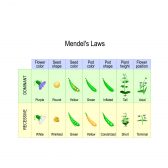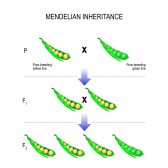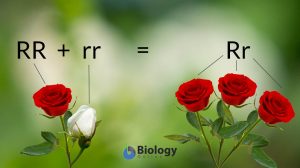Definition
noun
(genetics) Gregor Mendel‘s law stating that when two alleles of an inherited pair is heterozygous, then, the allele that is expressed is dominant whereas the allele that is not expressed is recessive
Get more info on dominance here: Incomplete dominance vs. codominance. Join us! Let’s talk!
Supplement
Breeding and testing about 5,000 pea plants, he was able to come up with crucial generalizations that were later on used as founding principles of the Mendelian inheritance or Mendel’s Principles of Heredity. The so-called “Mendel’s laws of inheritance” came about based on the set of principles of Gregor Mendel. These laws are the Law of Segregation, the Law of Independent Assortment, the Law of Dominance, and the Law of Unit Characters.
The unit factors that are being referred to in Gregor Mendel’s theories are now called genes. In a diploid organism, the genes exist in two alternative forms called alleles. The two forms of alleles are brought together in fertilization. As such, one set of alleles would come from the maternal gamete and the other set from the paternal gamete. When the two alleles are differ in a way that they are heterozygous, the allele that would determine the trait is said to be dominant. The other allele that is masked by the expression of the dominant allele is referred to as the recessive allele. Dominant alleles are often represented by upper case letters whereas the recessive alleles are by lowercase letters.
See also:





